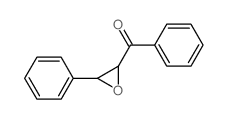Inhibition of cytosolic epoxide hydrolase by trans-3-phenylglycidols.
E C Dietze, E Kuwano, J Casas, B D Hammock
文献索引:Biochem. Pharmacol. 42(6) , 1163-75, (1991)
全文:HTML全文
摘要
The inhibition of murine cytosolic epoxide hydrolase has been studied with both racemic and enantiomerically pure trans-3-phenylglycidols. These compounds are the first enantioselective, slow binding inhibitors of cytosolic epoxide hydrolase. The (2S,3S)-3-phenylglycidol enantiomer was always a better inhibitor than the (2R,3R)-enantiomer. When the I50 values of (2S,3S)- and (2R,3R)-3-(4-nitrophenyl)glycidol were compared, the (2S,3S)-enantiomer was at least a 750-fold better inhibitor (I50 = 1.6 microM) than the (2R,3R)-enantiomer (I50 = 1200 microM), and it was the most potent inhibitor tested in the 3-phenylglycidol series. If the hydroxyl group of the glycidol was masked or converted to another functionality, the potency of the inhibitor decreased and the (2S,3S)-enantiomer was not necessarily the better inhibitor. In addition, trans-3-phenylglycidols demonstrated slow binding inhibition of cytosolic epoxide hydrolase. Inhibitors without a hydroxyl group, or with a blocked hydroxyl group, were not slow binding inhibitors. These results suggested that the hydroxyl group was important in both enantioselectivity and time dependence of inhibition of cytosolic epoxide hydrolase by trans-3-phenylglycidols. The hydration pattern of (2S,3S)- and (2R,3R)-2,3-epoxy-3-(4- nitrophenyl)glycidol by cytosolic epoxide hydrolase also differed. When incorporation of [18O] from water catalyzed by cytosolic epoxide hydrolase was measured, the (2S,3S)-enantiomer gave 12% incorporation into the benzylic carbon and the (2R,3R)-enantiometer gave 40% incorporation into the benzylic carbon. Finally, trans-3-phenylglycidols were found to be poor inhibitors of microsomal epoxide hydrolase.
相关化合物
| 结构式 | 名称/CAS号 | 分子式 | 全部文献 |
|---|---|---|---|
 |
反式-1,3-二苯基-2,3-环氧丙-1-酮
CAS:7570-86-7 |
C15H12O2 |
|
Highly enantioselective epoxidation of 2,4-diarylenones by u...
2005-02-18 [Angew. Chem. Int. Ed. Engl. 44(9) , 1383-5, (2005)] |
|
Anti-inflammatory effects of trans-1,3-diphenyl-2,3-epoxypro...
2013-03-01 [Food Chem. Toxicol. 53 , 371-5, (2013)] |
|
Structure-mutagenicity relationships of chalcones and their ...
1986-03-01 [Mutat. Res. 169(3) , 71-9, (1986)] |
|
C(alpha)-tetrasubstituted amino acid based peptides in asymm...
2006-01-01 [Biopolymers 84(1) , 97-104, (2006)] |
|
Cell cycle arrest and apoptosis induction by an anticancer c...
2010-08-01 [Arch. Pharm. (Weinheim) 343(8) , 429-39, (2010)] |